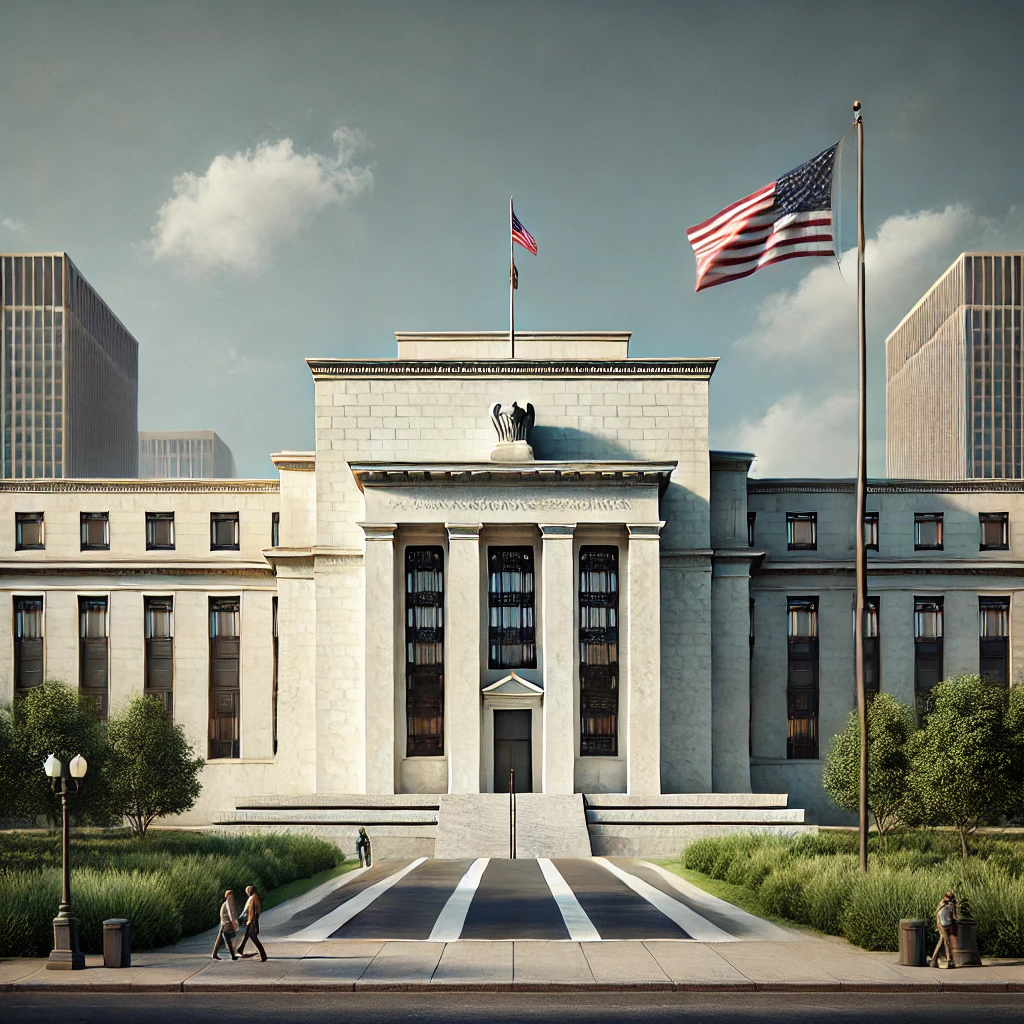Big Banks Expect a 25bps Fed Rate Cut This Week, Slower Easing Ahead in 2025
Key Highlights:
- The Federal Reserve is widely expected to lower interest rates by 25 basis points (bps) during its December 17-18 meeting.
- Updated economic projections will shed light on future rate cuts through 2025 and potentially 2026.
- Analysts anticipate a more hawkish tone from the Fed as it navigates a complex economic environment.
- Major banks, including Citi, JPMorgan, UBS, and Goldman Sachs, weigh in on the Fed’s upcoming decisions and long-term policy trajectory.
Federal Reserve Rate Decision: What to Expect
Investors are largely betting on a 25bps rate cut when the Federal Reserve concludes its December policy meeting. However, the real focus will be on the Fed’s updated economic forecasts, which will provide insight into policymakers’ expectations for rate cuts over the next few years.
The Fed faces a challenging backdrop, including:
- Persistently high inflation
- A strong labor market
- Uncertainty from geopolitical risks
- Potential policy shifts stemming from US election outcomes
Given these factors, experts predict the Fed will adopt a slightly hawkish tone. This could signal a slowing pace of rate cuts or even suggest that the easing cycle is nearing its end.
Insights from Major Wall Street Banks
Several leading financial institutions have provided their perspectives on what the Fed’s December meeting may bring and its implications for 2025:
1. Citi
- Expectation: A 25bps rate cut during the December meeting is "very likely" and already priced into the markets.
- Key Insight:
- The median dot plot is expected to show three rate cuts in 2025, down from four.
- Chair Jerome Powell is likely to emphasise the data-dependent nature of future policy moves, keeping all options open for the next FOMC meeting.
2. JPMorgan
- Expectation: The Fed will cut rates by 25bps, bringing the target range to 4.25%-4.5%.
- Key Insight:
- The Fed’s statement and forward guidance will likely remain unchanged.
- Updated economic projections may reflect better growth and firmer inflation.
- The long-term median interest rate forecast may rise to around 3% or higher, signalling a higher terminal rate.
3. UBS
- Expectation: A 25bps rate cut this month, with no further cuts expected in January. Quarterly cuts could resume in March 2025.
- Key Insight:
- UBS anticipates the Fed will shift to a quarterly pace of easing.
- However, this pattern may not last, with risks of a labor market slowdown between March and September 2025.
4. Goldman Sachs
- Expectation: A 25bps rate cut at the December meeting, reducing the target range to 4.25%-4.5%.
- Key Insight:
- The Fed is likely to slow the pace of cuts, eliminating a January cut from its projections.
- Cuts are still expected in March, June, and September, with a slightly higher terminal rate of 3.5%-3.75% in 2025.
Fed’s Challenges: Balancing Inflation and Growth
The Federal Reserve’s path ahead is fraught with challenges. Policymakers must balance:
- Persistent inflationary pressures that remain above the Fed’s 2% target.
- Robust labor market data, which complicates the case for aggressive rate cuts.
- Global uncertainties, including heightened geopolitical risks and the implications of upcoming US election results on trade and immigration policies.
Why This Matters for Markets
A more hawkish tone from the Fed could lead to:
- Market Volatility: Slower rate cuts may affect bond yields and equity valuations.
- Economic Impact: Higher borrowing costs could weigh on corporate investments and consumer spending.
- Policy Clarity: Investors will scrutinise the Fed’s projections for clarity on the pace and duration of the easing cycle.
Outlook for 2025 and Beyond
The consensus among big banks suggests a slower pace of rate cuts in 2025. This could be driven by:
- Improved economic growth.
- Persistent inflationary concerns.
- The Fed’s intention to maintain flexibility in its policy approach.
While markets anticipate gradual rate cuts throughout 2025, the Fed’s policy path will remain highly data-dependent, with adjustments possible based on evolving economic conditions
(Sources: investing.com, reuters.com) .

